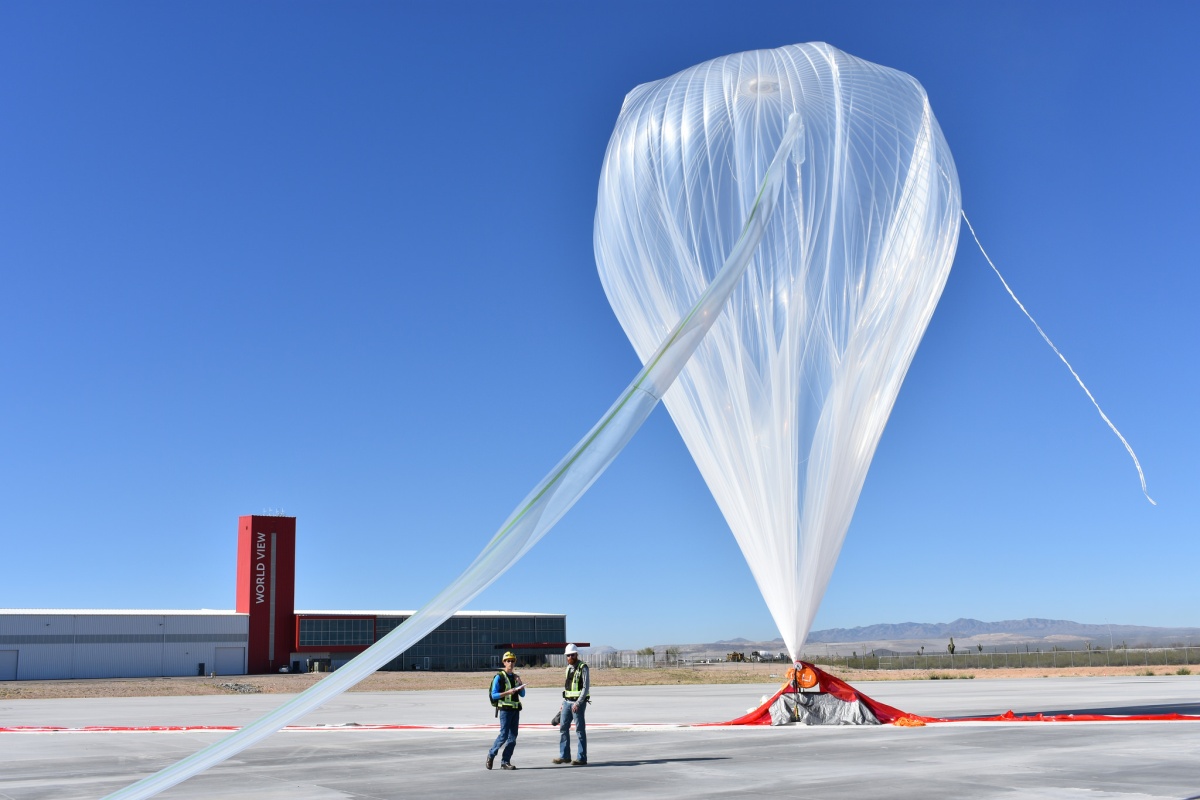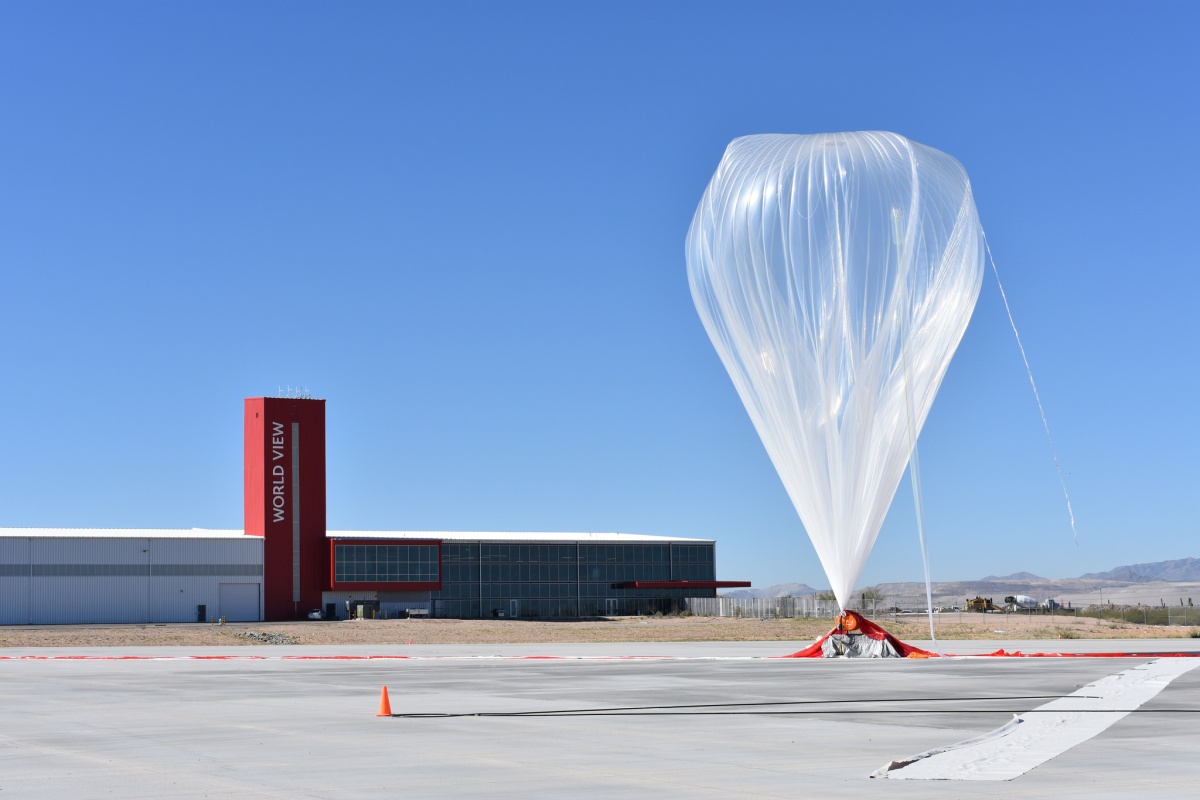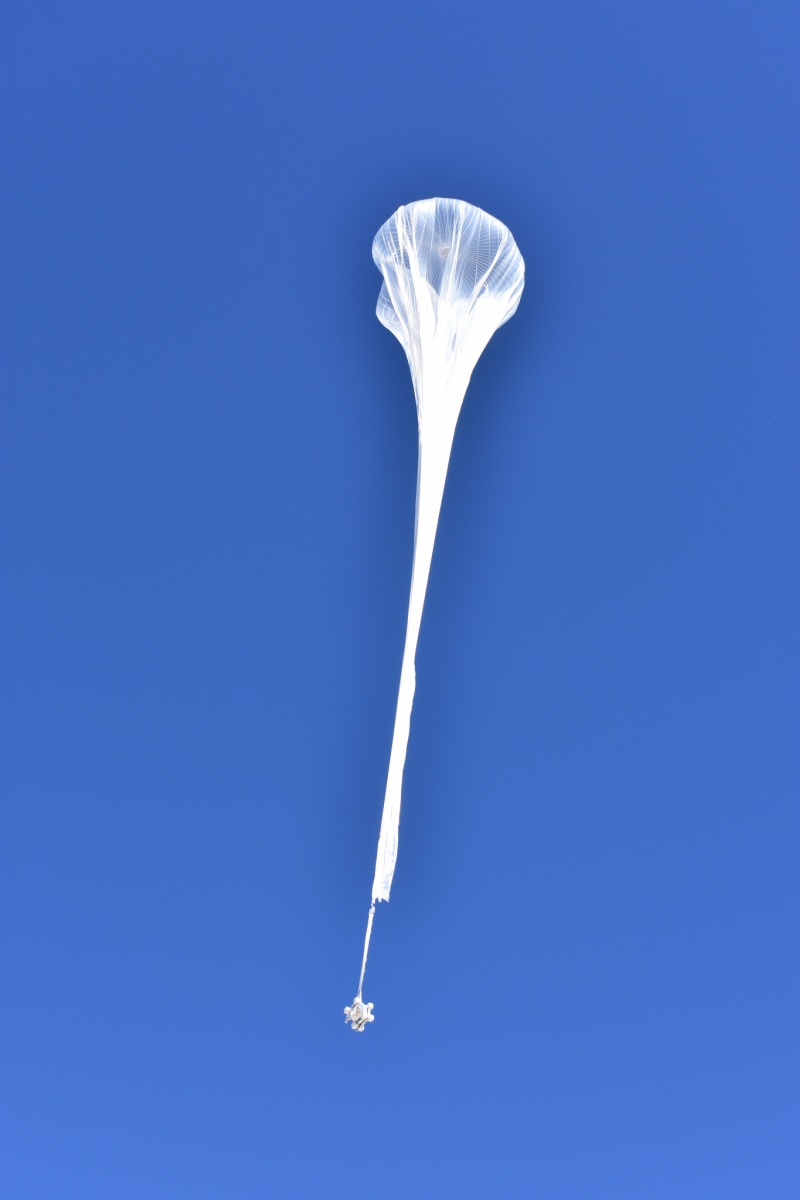Purpose of the flight and payload description
The objective of the flight, commissioned by the NASA Flight Opportunities program office (FOP), was to transport under a stratospheric balloon two radiation detection experiments. The first, developed by the NASA Ames Research Center, is a chip-based radiation sensor intended to identify various radiations and their unique energy levels in space environments. This high-altitude mission provided the first opportunity to test this sensor and calibrate it against known instruments to develop an inexpensive, small footprint radiation nose system.
The second payload, the Automated Radiation Measurements for Aerospace Safety (ARMAS) system, was developed by Space Environment Technologies and used an innovative approach with airborne dosimeter sensors and ground-based servers to both enhance space science research, and improve aviation safety. While in flight, data from a dosimeter is retrieved in real-time, either via Iridium satellite on research aircraft/balloons or Wi-Fi on commercial aircraft. The data is then downlinked to the ground and used by NASA's Nowcast of Atmospheric Ionizing Radiation for Aviation Safety (NAIRAS) model of the global radiation environment. When ARMAS data is ingested into NAIRAS, an improved accuracy of radiation dose rates along with airborne flight tracks is accomplished. The goal of ARMAS is to enable air traffic management to monitor global radiation "weather", thus allowing commercial air traffic to avoid higher radiation areas and reducing crew and passenger radiation exposure by flying in lower radiation regions or spending less time in higher radiation locations.
Details of the balloon flight
Balloon launched on: 3/29/2018 at 9:39 PT
Launch site: Spaceport Tucson, Arizona, US
Balloon launched by: World View Enterprises
Balloon manufacturer/size/composition: Zero Pressure Balloon
Flight identification number: T20-08
End of flight (L for landing time, W for last contact, otherwise termination time): 3/29/2018
Balloon flight duration (F: time at float only, otherwise total flight time in d:days / h:hours or m:minutes - ): 7 h
Landing site: In Texas, US
The balloon flight was launched from Space Port Tucson on March 29 and spent 7 hours flying at 115.000 ft. The payload was recovered in Texas.
External references
- World View website
- A Match Made on a High-Altitude Balloon NASA Armstrong Flight Research Center press release
- World View successfully executes NASA FOP mission World View press release
- World View Successfully Executes NASA FOP Mission with an ARMAS FM Space Enviromental Technologies website
If you consider this website interesting or useful, you can help me to keep it up and running with a small donation to cover the operational costs. Just the equivalent of the price of a cup of coffee helps a lot.




